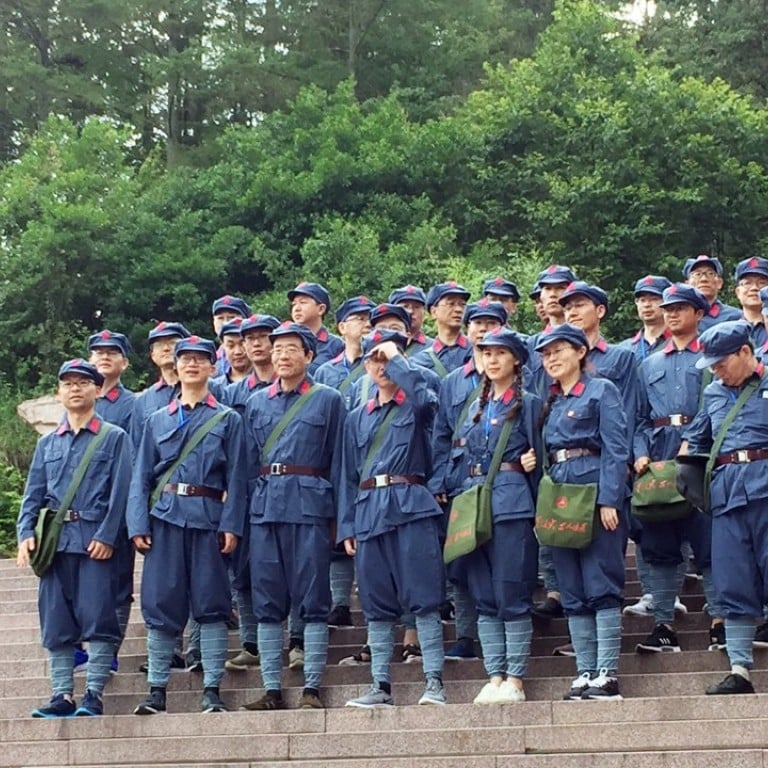
China’s ‘red education’ history tours and the rise of communist cosplay
For the owner of a company that rents Red Army uniforms to tourists, business is booming
If anyone can best tell the scale and intensity of China’s “red education” drive to promote loyalty to the ruling Communist Party, it’s businessman Yu Meng.
The 36-year-old runs the largest Red Army uniform rental business in Jinggangshan, a city dubbed the “cradle of the communist revolution” deep in the mountains of Jiangxi. Last year alone, his company rented uniforms to 256,000 people taking part in red ideology study tours.
Yu started the Xiangganbian Red Army uniform company 10 years ago. But it’s only in the last three years that the business has really taken off, thanks to the relentless push of patriotic education by President Xi Jinping. Xi has said he wants “faith” in communist rule to be passed down to a new generation as “red DNA”.
The Briton in Beijing who made Mao suits fashionable again
Yu’s company now has a 60 per cent share of the city’s booming military uniform rental industry.
“Five to 10 years ago, most of the visitors were tourists, and not a lot of them wore Red Army uniforms,” he said. “But in the last two or three years, most of the visitors we see are taking part in study tours.
“It has to do with the government policy direction after the 18th party congress [in 2012],” he said.
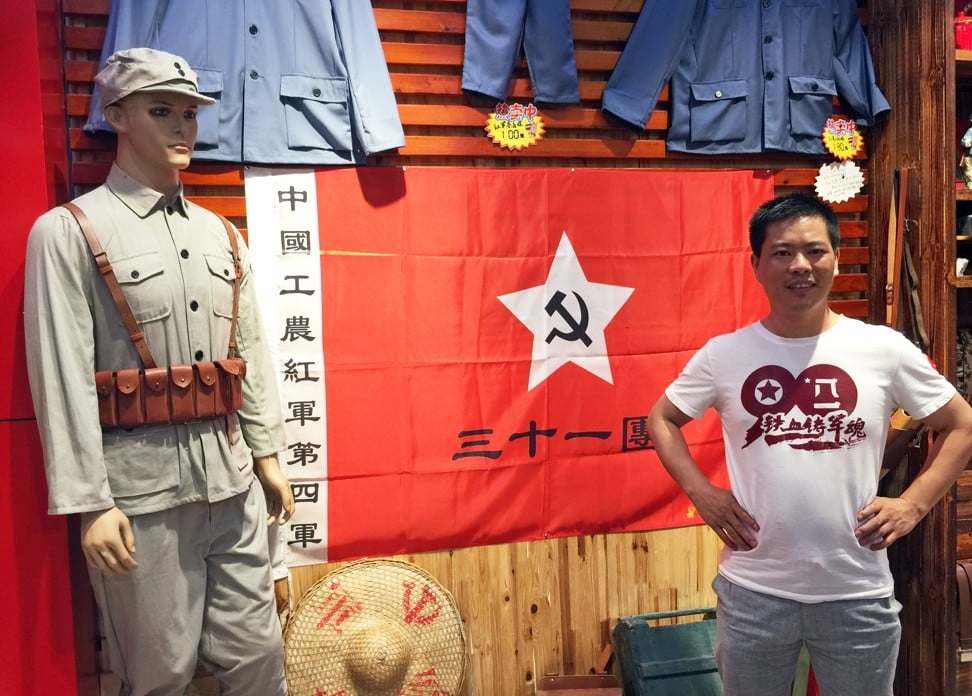
Most of the visitors to Jinggangshan now are civil servants, employees of state and private enterprises, and students. They are sent by their employers or schools as part of their work or study requirements.
The number of people going to the city for study tours jumped by more than 50 per cent every year from 2015 to 2017, according to the Jinggangshan government.
About 450,000 took the tours in the first 11 months last year, up 51.22 per cent from a year earlier. That number is almost three times the city’s population of 160,000.
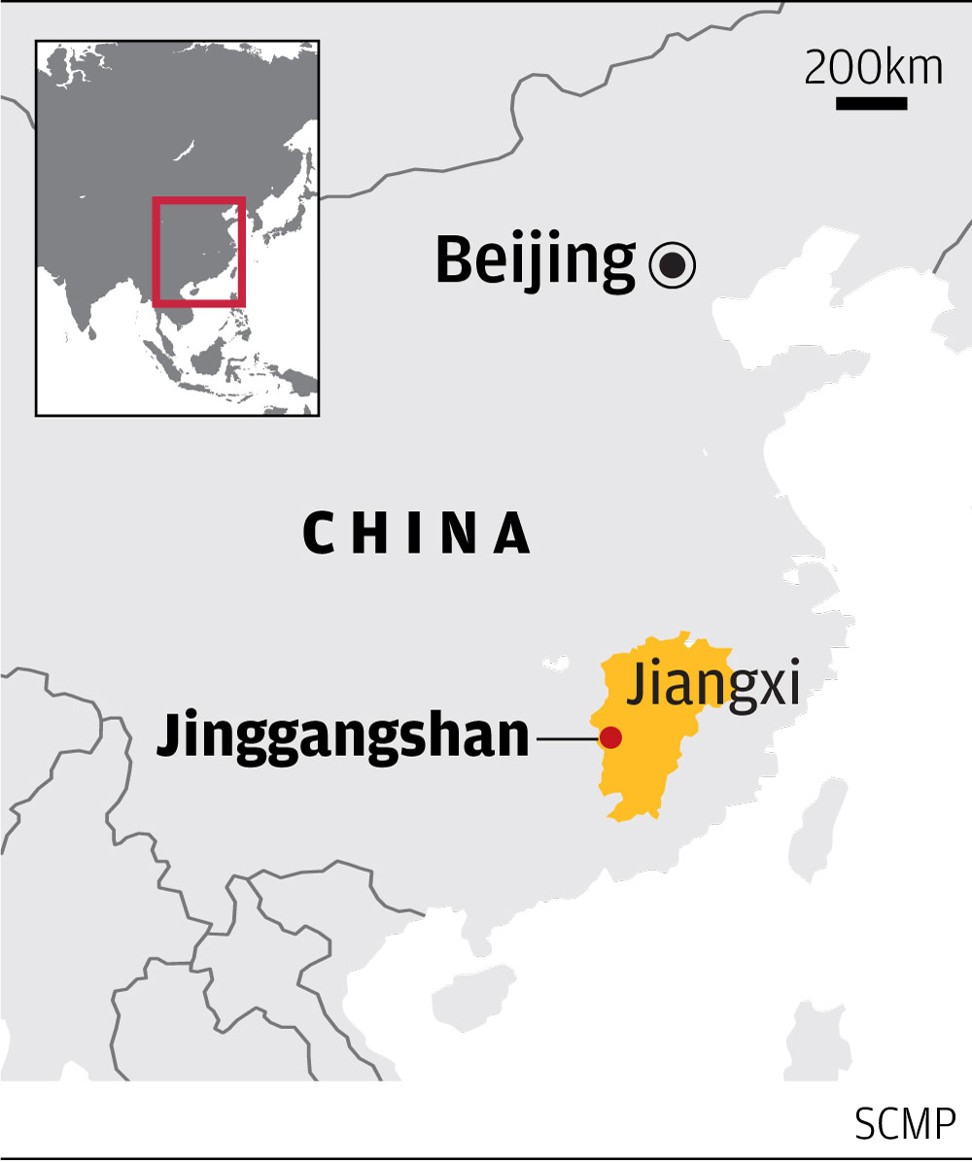
Many, though not all, government ministries, companies and schools make it mandatory for their employees or students to wear period uniforms for the four or five days of site visits and classes during a Jinggangshan study tour.
Yu said donning a Red Army suit – the uniform of Communist guerillas in the late 1920s and early ’30s during the civil war against the Nationalists – while visiting the city had become a phenomenon.
“It has become a must-do” for many people, he said.
Revealed: life inside China’s ‘Red Army’ schools
From renting 53,000 uniforms in 2010, his business has grown steadily every year.
Dressed in one of the uniforms, a woman waits with a crowd of visitors to climb the narrow stairs to see the bedroom Mao Zedong once used when he led the guerilla army.
“My work unit rented the uniform for me,” said the woman, who works for a state-run sports institute. “I have to wear it every day I’m here.”
Another visitor, 19-year-old Li Feifei from nearby Zhuzhou, said going to Jinggangshan was an experience she could show off to her former high school classmates.

With the trend taking hold, Jinggangshan’s historical sites now look like they are hosting mass cosplay gatherings. Busloads of uniformed visitors swarm the city’s museum, Mao’s two former residences, and the mountaintop where Communist forces fended off the Nationalist army. Cadres also walk the trails where Communist guerillas secretly sneaked food into the mountains as they were besieged by Nationalist fighters in 1928 in order to “experience the hardship” of the early party loyalists.
Pictures of these red education tours have sparked controversy online. In May, photos showing bishops from government-sanctioned Catholic churches touring Jinggangshan in Red Army suits drew fire from Catholics overseas. In 2016, photos showing 60 Macau casino employees in Red Army attire raised questions about how the gambling industry is cosying up to the party.
Xi has promoted red education since he came to power that year. Under his aegis, the party has intensified its clampdown on dissidents and internet censorship. The government has also used red education to promote party loyalty as a “faith”, or xinyang in Chinese, a term that can also be translated as “religion”.
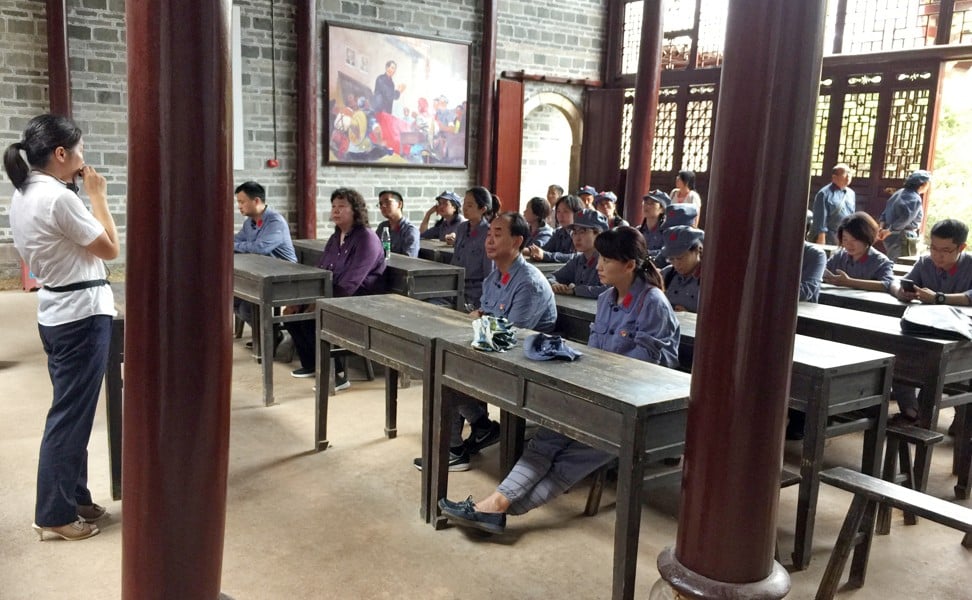
Martyrs and heroes are often highlighted in the study tours. Guides tell sensational stories about young fighters sacrificing their lives as the party spent more than two years deep in the mountains of Jiangxi province after retreating from the Nationalists in Hunan.
Not surprisingly, a major client for uniform rentals is the Jinggangshan National Youth Education Centre for Modern History, under the auspices of the Communist Youth League, which organises tours for young people.
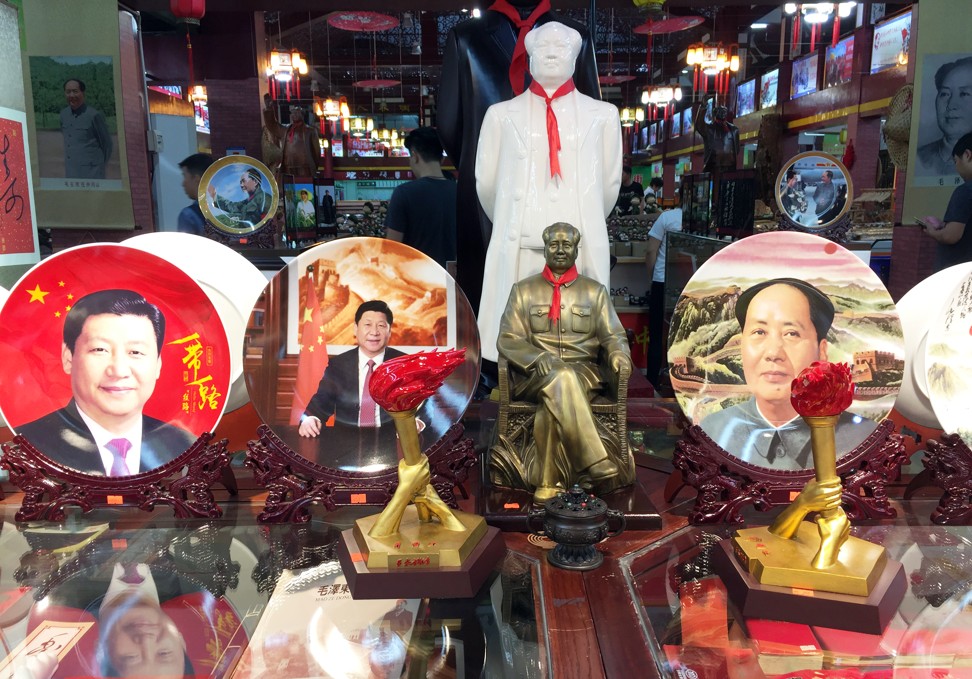
But Beijing appears concerned that its message is being lost amid the uniforms and tourism. An article in party newspaper Guangming Daily last month warned that many of the study tours had become “sightseeing paid for by the government”. Another, in a magazine affiliated with state-run Xinhua, said many participants cared only about taking pictures of themselves in uniform outside historic sites and were not serious about studying the ideology the party “wants to put into their hearts”.
Yu, a Hubei native, said he believed in communist values, and that was why he chose to study at Jinggangshan University. He worked as a tour guide and set up a photo studio after he graduated, then began selling and renting Red Army uniforms after seeing tourists posing for pictures in simple period costumes.
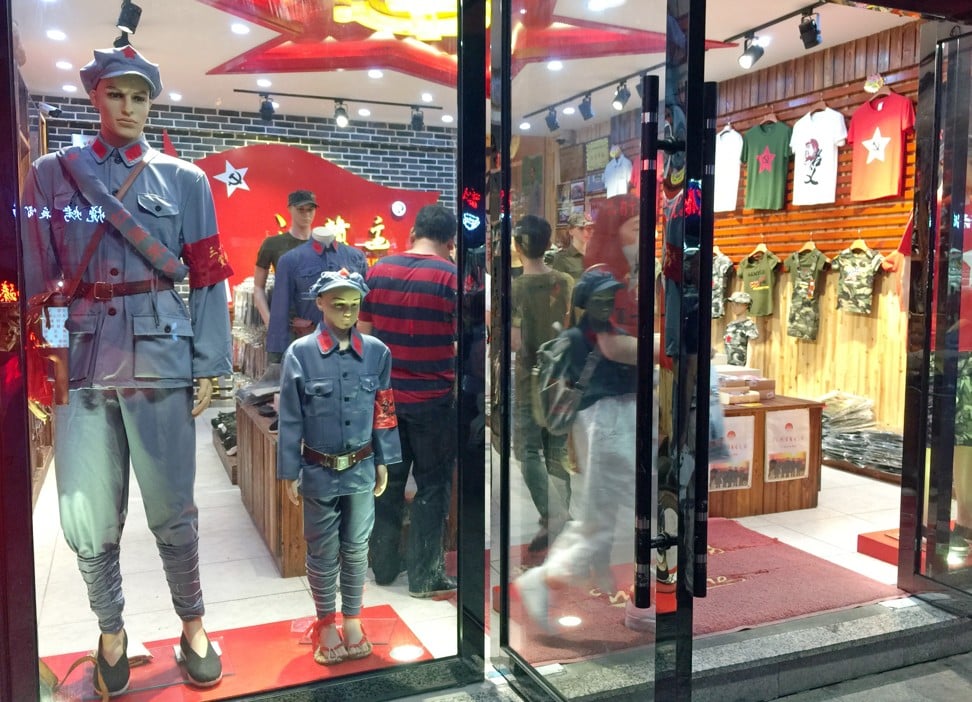
With his uniform rental business growing, Yu has diversified into other areas, including sales of Red Army uniforms, fruit, wireless earphones to listen to tour guides, and even guest houses. He now employs 100 people and is aiming to expand his team to 300 by 2021.
He is also hoping to extend his business to all major red education bastions, including Yanan, Zunyi, Dabieshan, Beijing and Shanghai. The first two are landmarks of the party’s historic Long March, and the third is the site of its victory over the Nationalists.
In Mao Zedong’s hometown, statue industry loses shine but faith in the ‘Great Helmsman’ remains
While his business in Yanan, Shaanxi – the grey uniforms of the Eighth Route Army during the Long March – is doing well, Yu said the “must-do” culture of Jinggangshan to get dressed up was not yet established there. But he believes it is only a matter of time, and entrepreneurial types in these places have been buying uniforms from him to start renting to tour groups.
“Basically, Jinggangshan is exporting its model,” he said.

